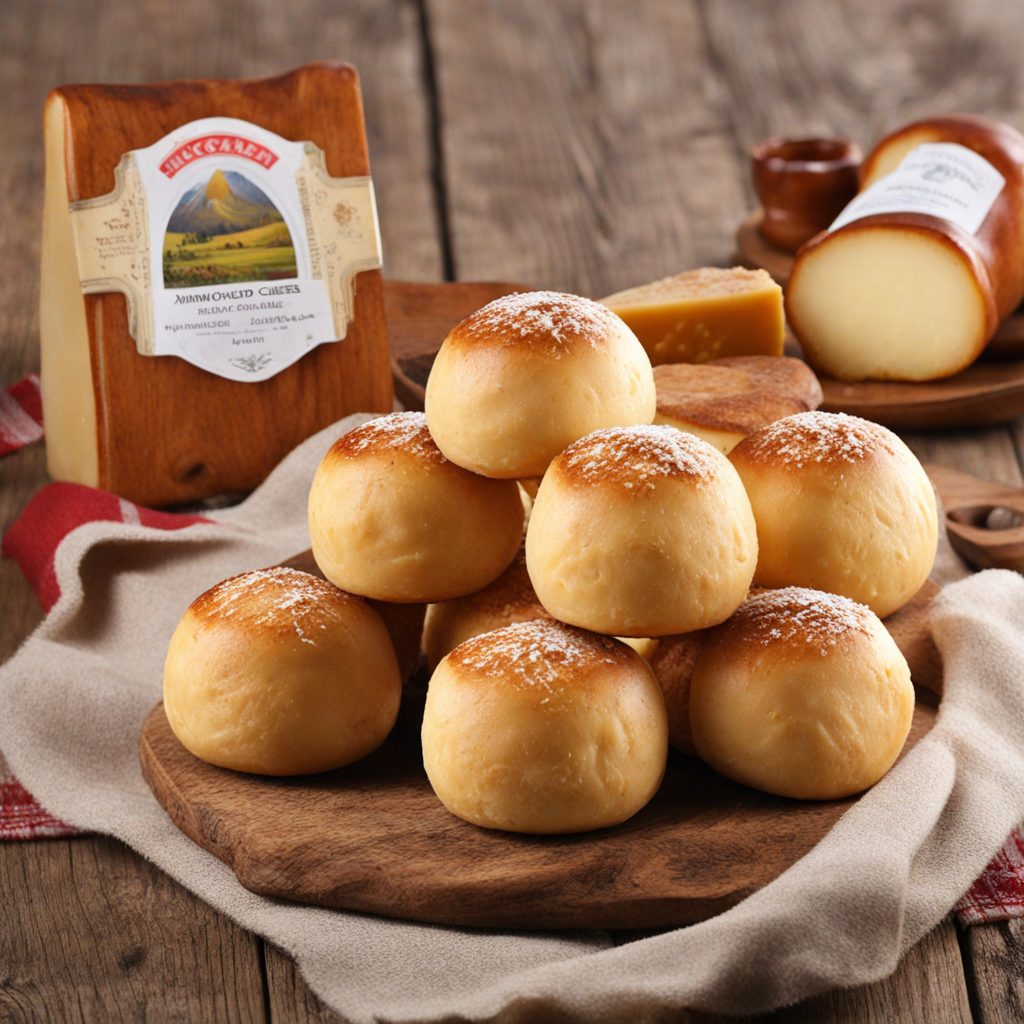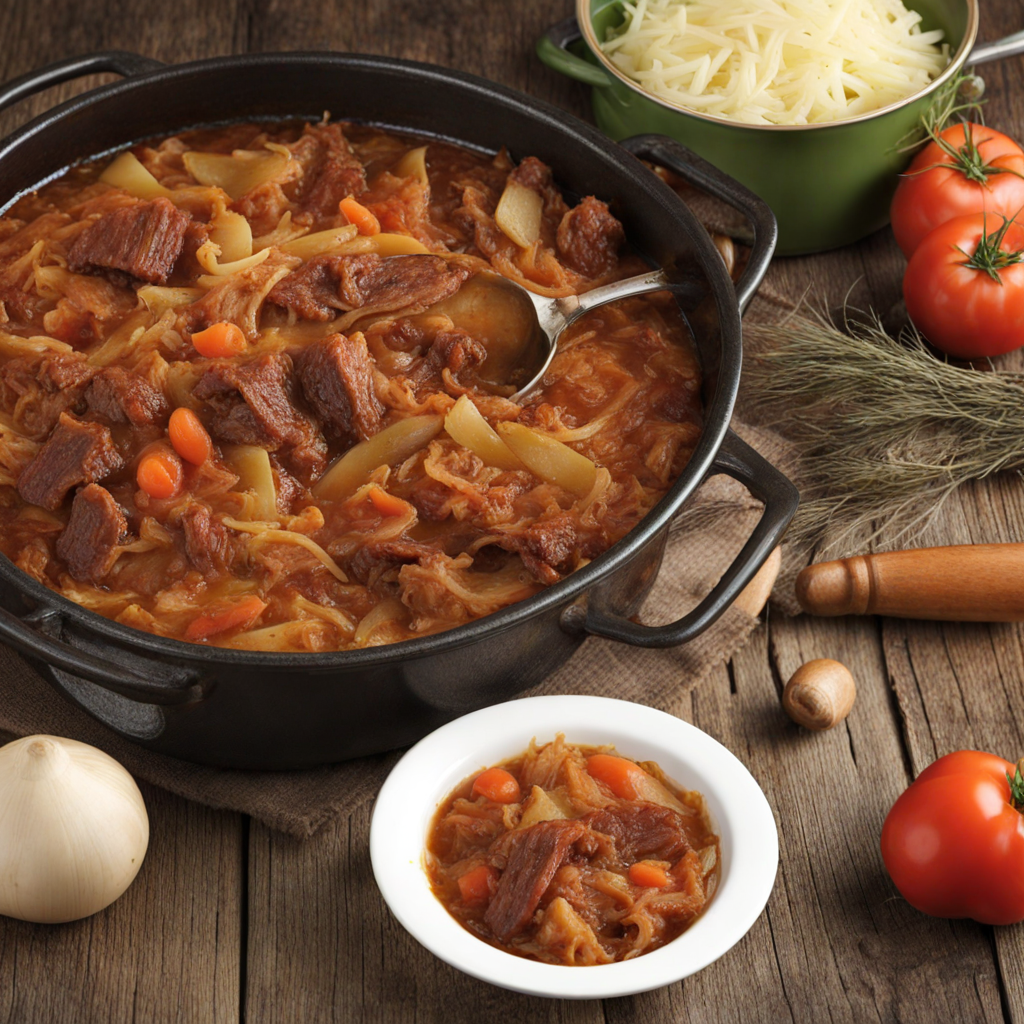Oscypek
Oscypek is a traditional Polish cheese made from sheep's milk, originating from the Tatra Mountains in southern Poland. This artisanal cheese is crafted using a time-honored method that dates back centuries, reflecting the rich cultural heritage of the region. The cheese has a distinctive, slightly smoky flavor that comes from the technique of smoking it over a wooden fire, which also imparts a unique aroma. Its texture is firm yet creamy, making it a delight to bite into. The cheese is often shaped into a characteristic spindle or cylindrical form, decorated with intricate patterns that showcase the craftsmanship involved in its production. When enjoyed fresh, Oscypek has a mild and subtly sweet taste, but as it ages, the flavor intensifies, developing a sharper profile that’s both savory and complex. It is often served grilled, which enhances its smoky notes and creates a deliciously crispy exterior while maintaining a soft, gooey interior. Pairing Oscypek with local cranberry sauce or drizzling it with honey can complement its flavors beautifully, adding a sweet contrast that elevates the overall experience. In Polish cuisine, Oscypek is not only a standalone delicacy but also a versatile ingredient that can be used in various dishes. It can be diced and added to salads, melted over vegetables, or used as a filling in pierogi. The cheese is often enjoyed during festive occasions and is a staple in the mountain regions, where it is commonly sold by local vendors. For anyone seeking to explore new tastes, Oscypek offers a unique journey into the flavors of Poland, inviting you to savor the traditions and artistry behind this beloved cheese.
How It Became This Dish
Oscypek: A Taste of Polish Tradition Oscypek, a traditional smoked cheese from Poland, is not just a culinary delight; it is a symbol of the country's rich cultural heritage, particularly in the Tatra Mountains region. This unique cheese, made from sheep's milk, has a history that intertwines with the customs and livelihood of the Polish highlander community, offering a flavorful glimpse into the past and present of Polish gastronomy. #### Origins of Oscypek The origins of Oscypek can be traced back to the shepherds of the Tatra Mountains, where the practice of sheep herding has been an integral part of life for centuries. The name "Oscypek" is believed to derive from the word "oscype," which means "to press" in the local dialect, referencing the traditional method of pressing the cheese into molds to shape it. The exact date of Oscypek's creation is difficult to pinpoint, but it is widely accepted that the cheese-making process began in the 15th century, coinciding with the rise of pastoralism in the region. The unique climate of the Tatra Mountains, with its cool temperatures and abundant grazing lands, provided an ideal environment for sheep farming. The highlanders, known as "górale," utilized the rich milk from their sheep to create Oscypek, which could be preserved for long periods, making it a vital food source during the harsh winter months. The cheese was not only practical but also became a staple in their diets, providing essential nutrients and energy. #### Cultural Significance Oscypek is much more than just a food item; it embodies the traditions and lifestyle of the Polish highlanders. The cheese is often associated with the Tatra Mountains' folklore and customs. It is commonly prepared during festive occasions and celebrations, reflecting the community's values and social cohesion. The process of making Oscypek is a communal activity, with families and neighbors coming together to share techniques, stories, and laughter. The cheese is traditionally shaped into intricate forms, including the iconic spindle or barrel shapes, often adorned with decorative motifs that reflect local artistry. These shapes are not merely aesthetic; they also serve practical purposes, such as ensuring even smoking and aging. The craftsmanship involved in Oscypek production has been passed down through generations, with each family adding its own unique touch to the recipes and techniques. Oscypek is also closely linked to Polish national identity. In 2013, it was granted Protected Geographical Indication (PGI) status by the European Union, which recognizes its unique qualities tied to its geographical origin. This designation not only helps preserve the traditional methods of cheese-making but also elevates Oscypek's status as a culinary treasure of Poland. The PGI status ensures that only cheese produced in specific regions of the Tatra Mountains, using traditional methods, can be labeled as Oscypek, further promoting its authenticity and cultural significance. #### Development Over Time As the centuries progressed, the production and popularity of Oscypek evolved. In the early days, Oscypek was primarily consumed by the highlander community, but as Poland opened up to tourism in the late 20th century, the cheese gained recognition beyond its mountainous origins. Tourists visiting the Tatra region quickly became enamored with Oscypek, leading to an increase in its production and availability. In contemporary Poland, Oscypek has found its way into various culinary applications. While it is still enjoyed in its traditional form, often served with cranberry sauce or grilled, chefs have begun to experiment with it in innovative dishes, such as salads, pasta, and even desserts. This fusion of tradition and modernity has helped to keep the cheese relevant in today's culinary scene, appealing to both locals and tourists alike. Moreover, Oscypek has become a point of pride for Polish cuisine on the global stage. Food enthusiasts and chefs around the world are increasingly interested in authentic, artisanal products, and Oscypek fits the bill perfectly. Its distinctive flavor, which is both salty and slightly tangy, combined with its unique texture, makes it a versatile ingredient that can enhance a wide range of dishes. The resurgence of interest in traditional foods has also led to a revival of artisanal cheese-making practices. Many young highlanders are returning to their roots, embracing the age-old methods of Oscypek production and ensuring that this cultural heritage is preserved for future generations. Workshops and festivals celebrating Oscypek have become popular, where visitors can experience the cheese-making process firsthand and appreciate the skills of the artisans. #### Oscypek Today Today, Oscypek is a beloved staple in Poland and a source of pride for the highlander community. It can be found in markets, restaurants, and highland fairs, where it is often sold by local producers. The cheese is typically enjoyed as a snack, paired with a glass of Polish beer or a shot of traditional vodka. Its smoky flavor and firm texture make it a delightful addition to charcuterie boards and cheese platters. In recent years, the global culinary scene has embraced Oscypek, with chefs integrating it into diverse cuisines. Its adaptability has allowed it to shine in both traditional Polish dishes and modern culinary creations. As the world becomes increasingly connected, Oscypek stands as a testament to the importance of preserving food traditions while also exploring new avenues of expression. #### Conclusion Oscypek is more than just a cheese; it is a living piece of Polish history and culture. From its humble beginnings in the Tatra Mountains to its status as a cherished culinary treasure, Oscypek reflects the resilience and creativity of the highlander community. As Poland continues to celebrate its culinary heritage, Oscypek will undoubtedly remain a symbol of tradition, craftsmanship, and the enduring connection between food and culture. Whether enjoyed in its traditional form or reimagined in modern cuisine, Oscypek will continue to captivate taste buds and tell the story of Poland's rich gastronomic landscape.
You may like
Discover local flavors from Poland







